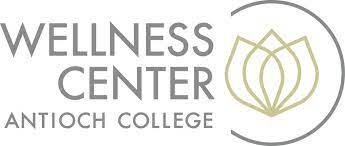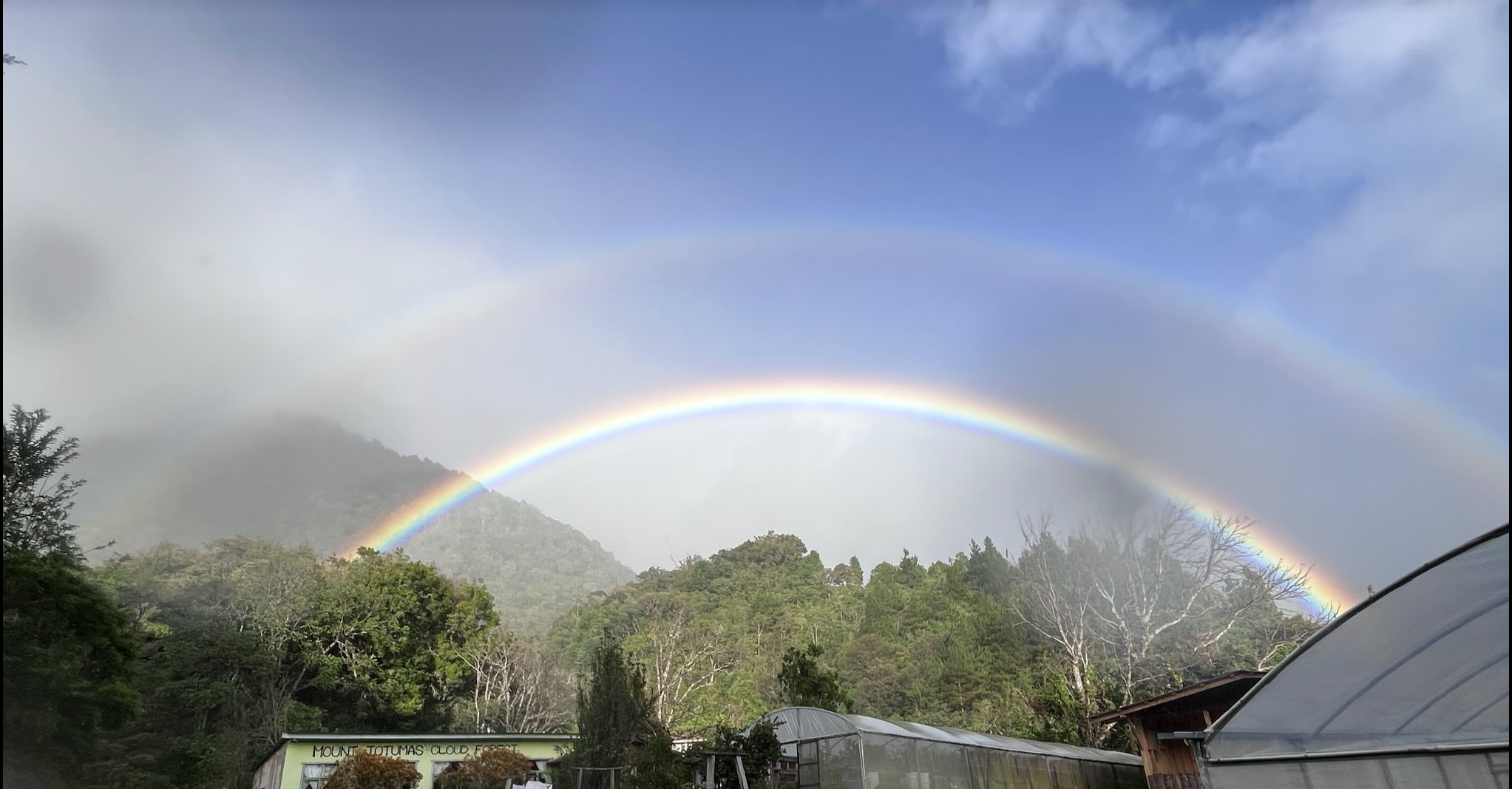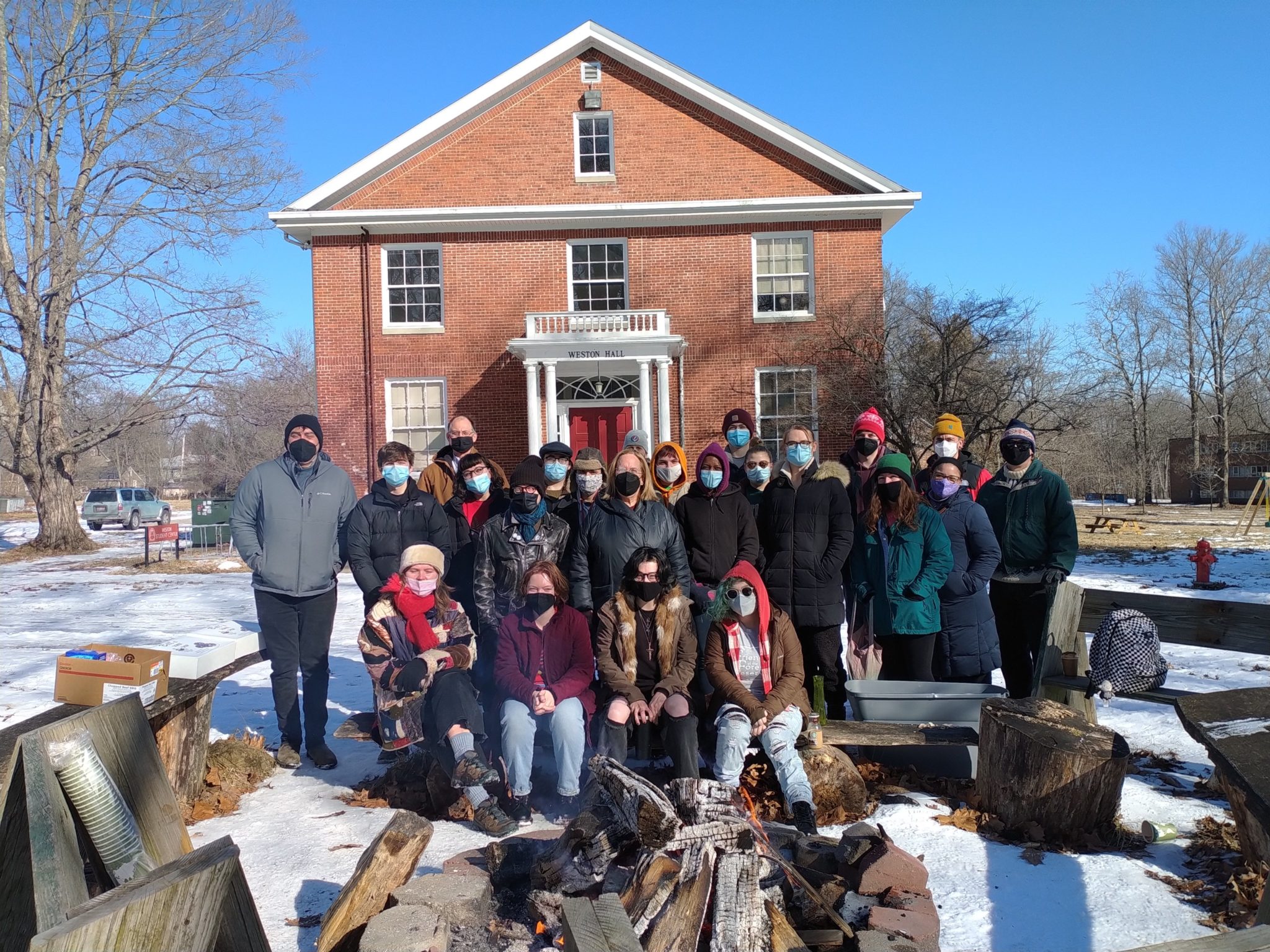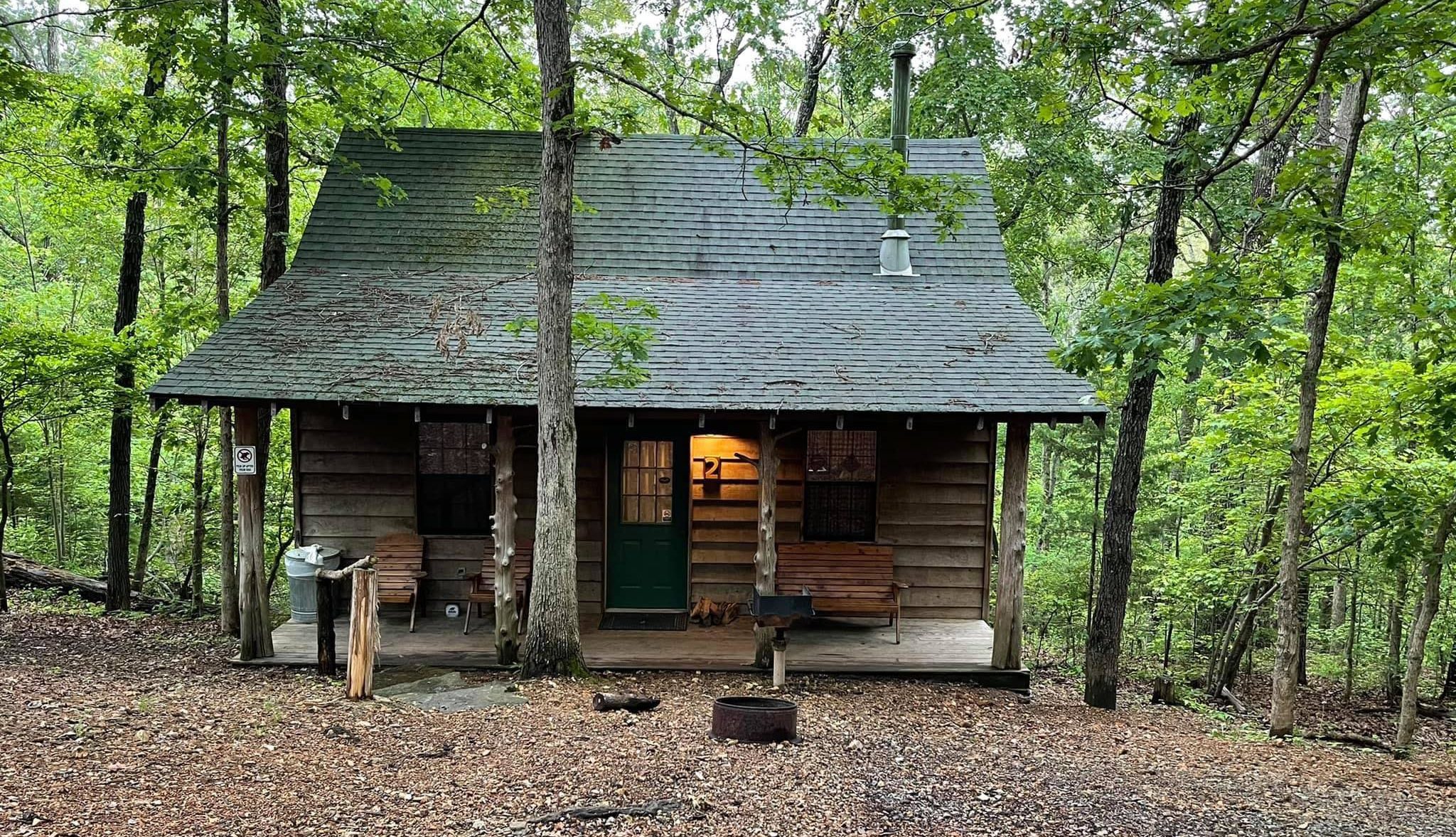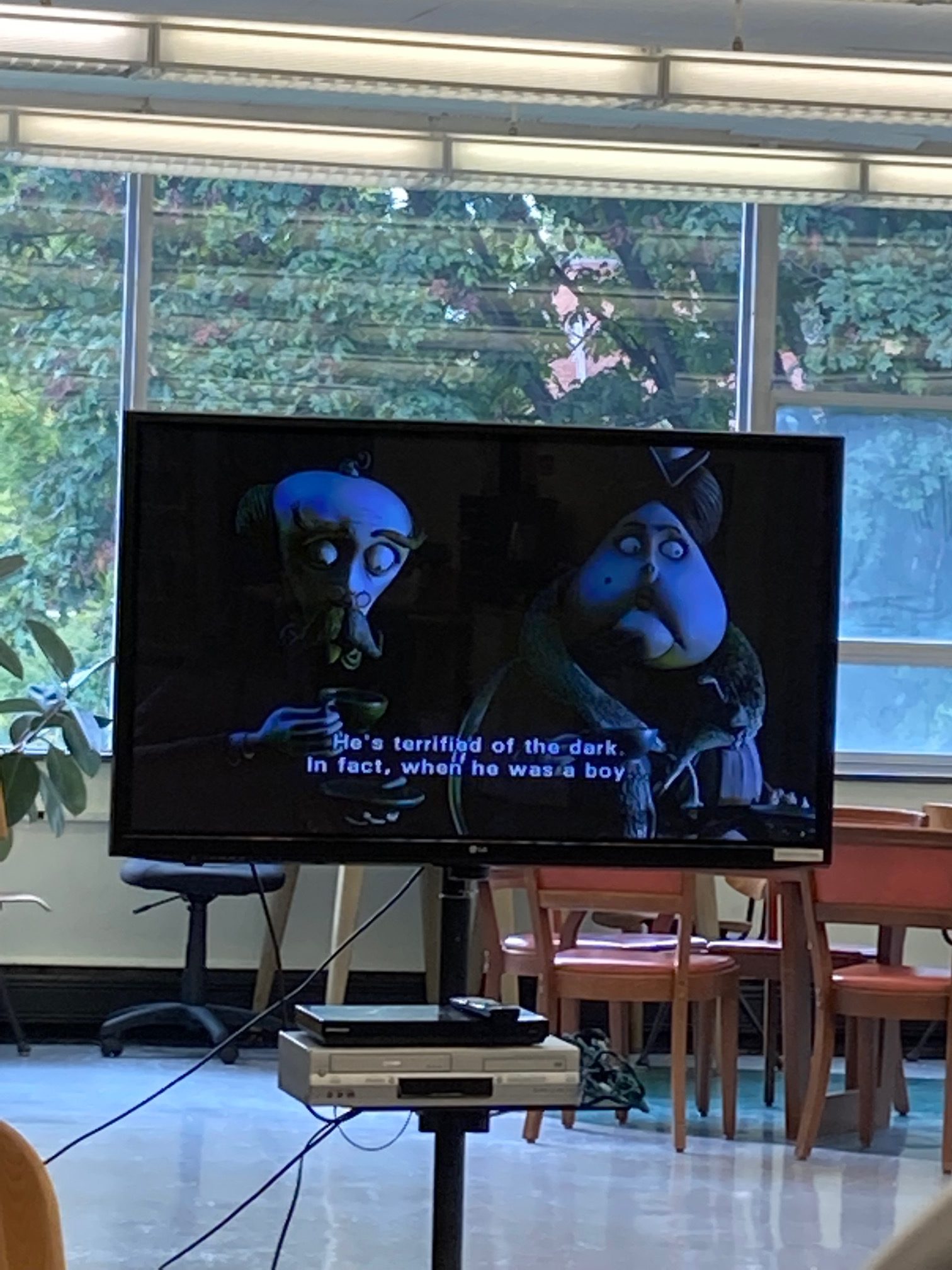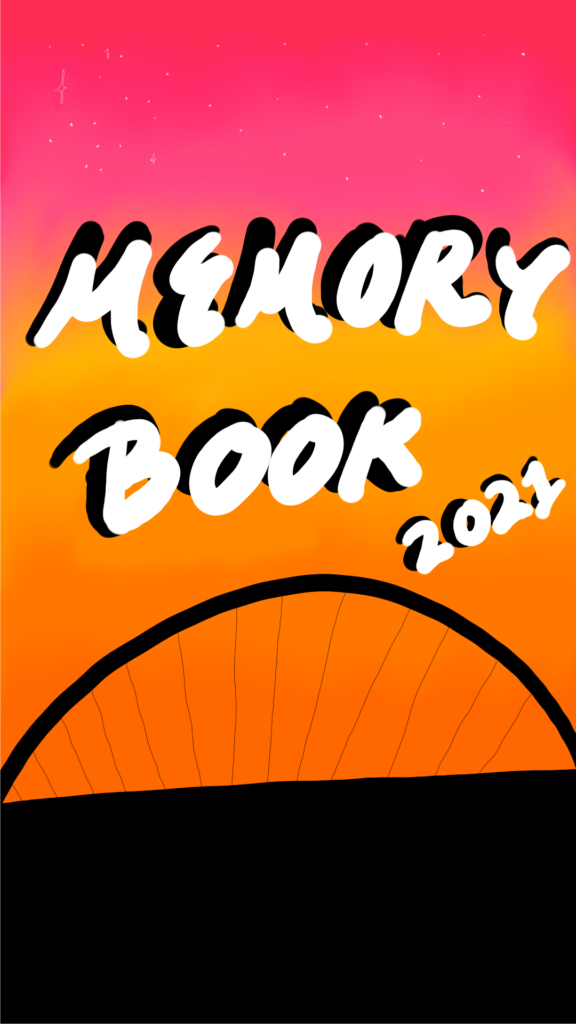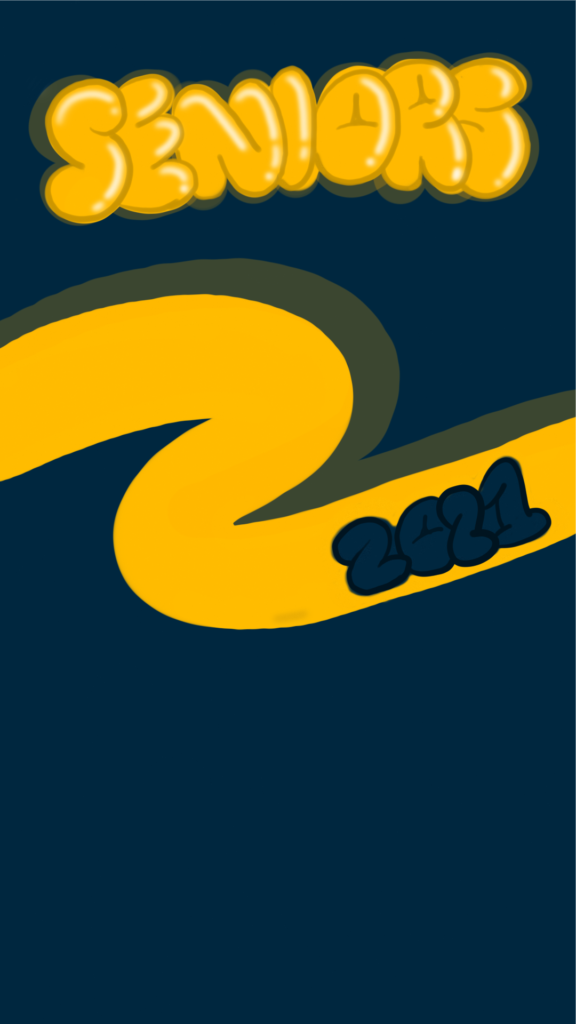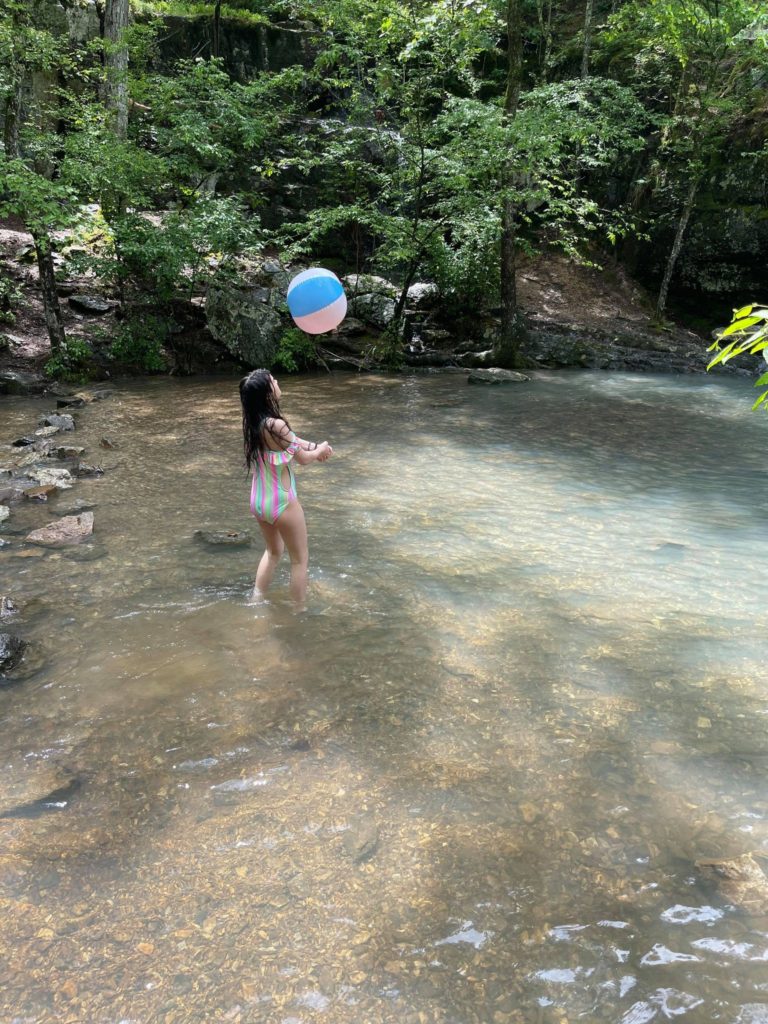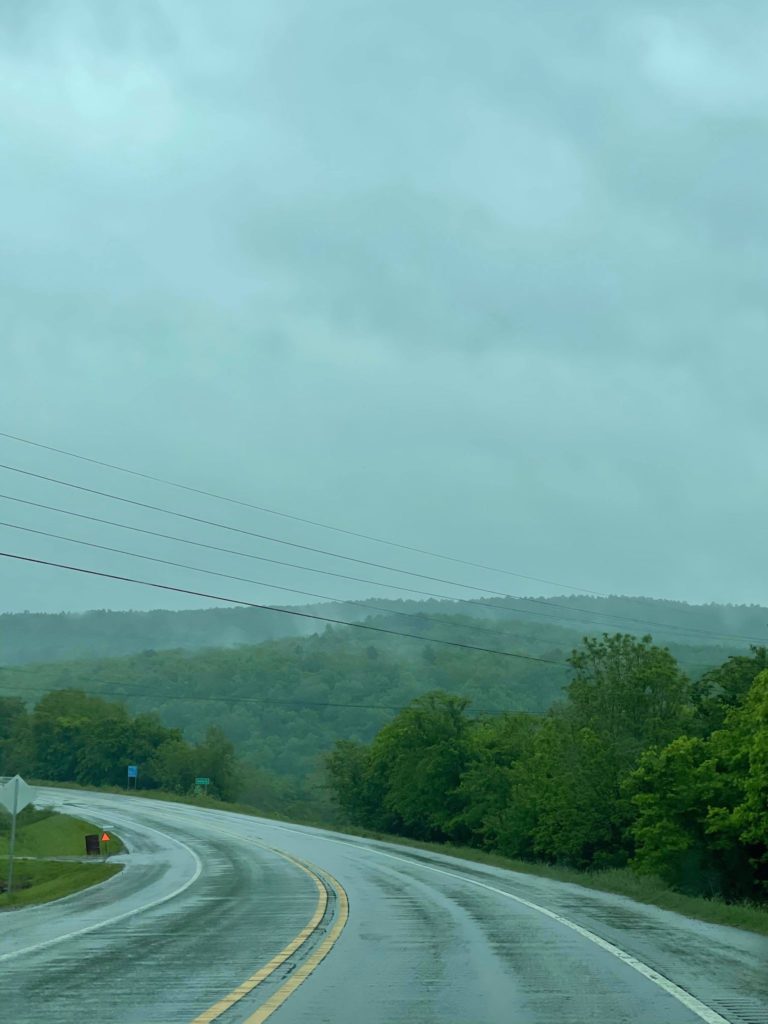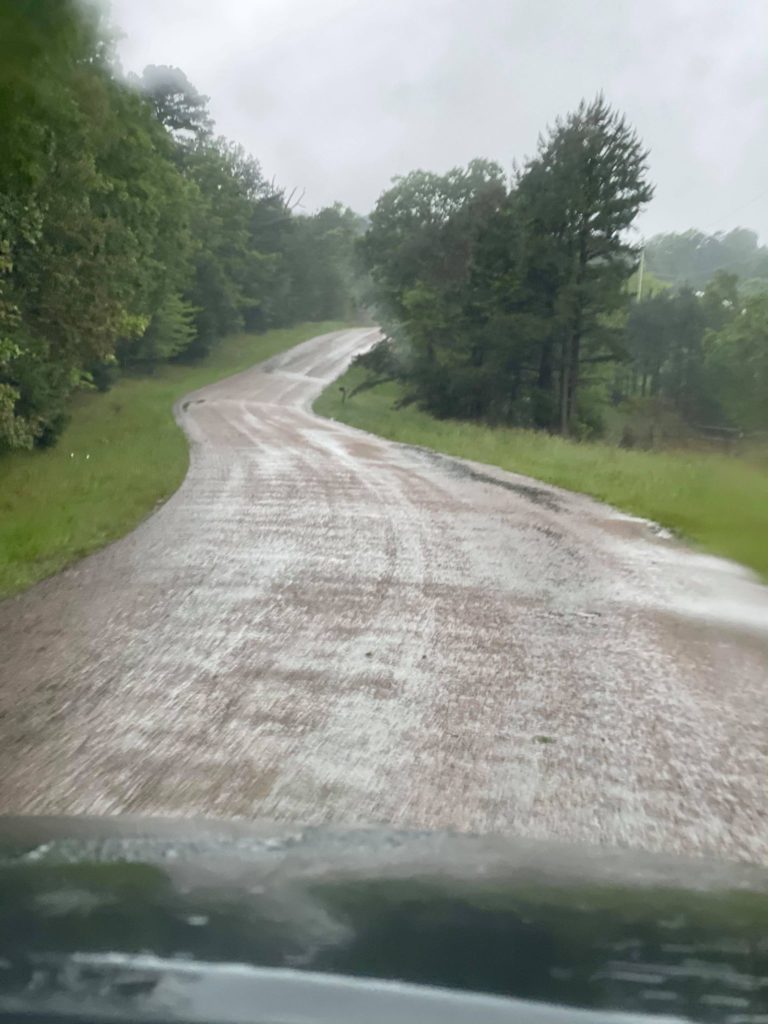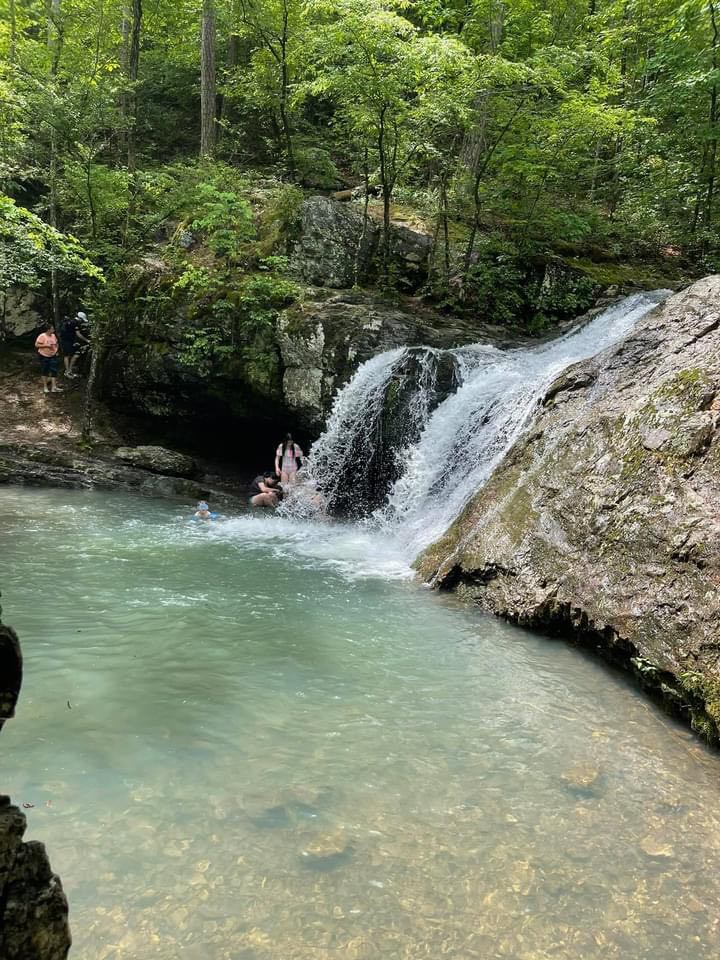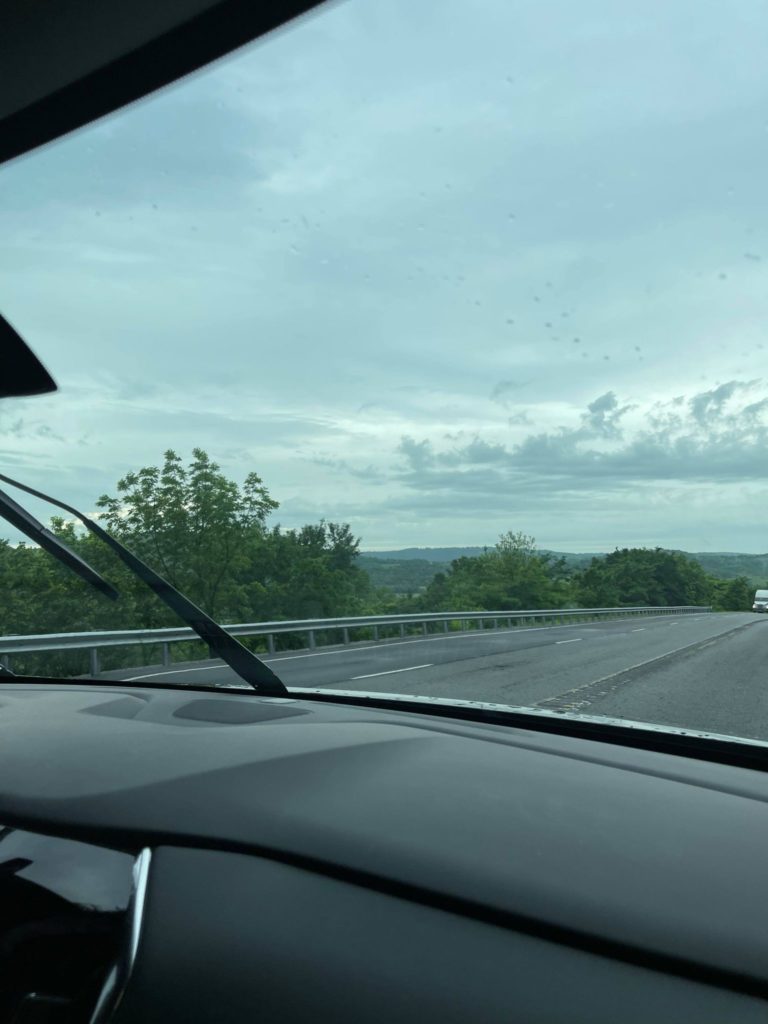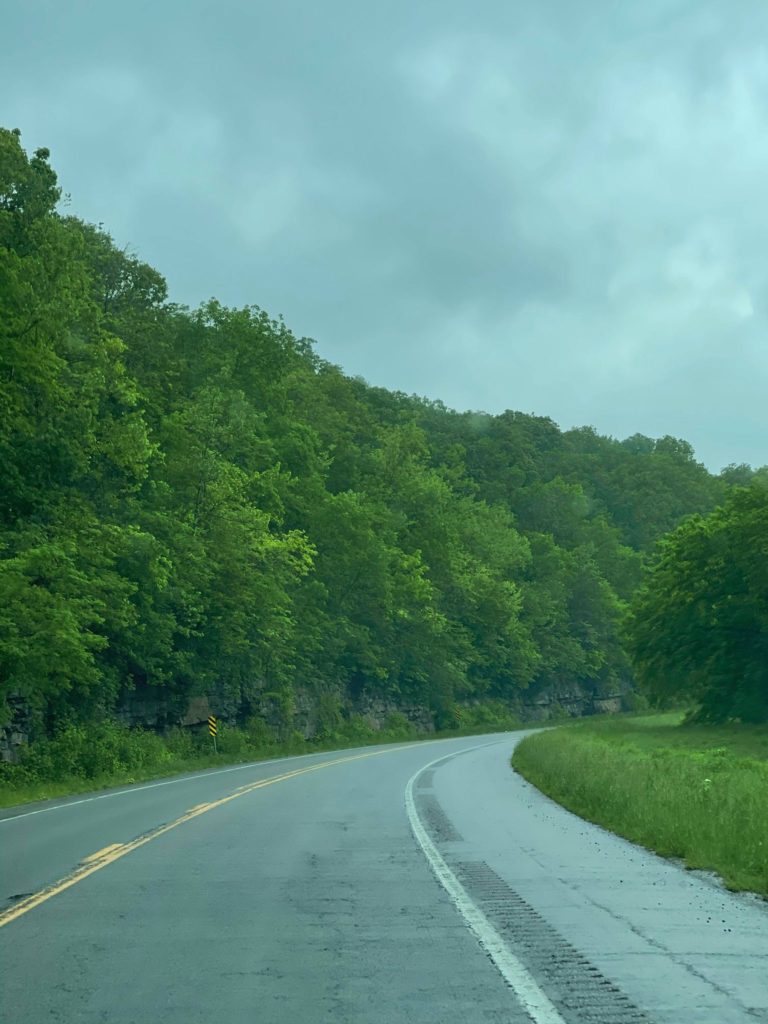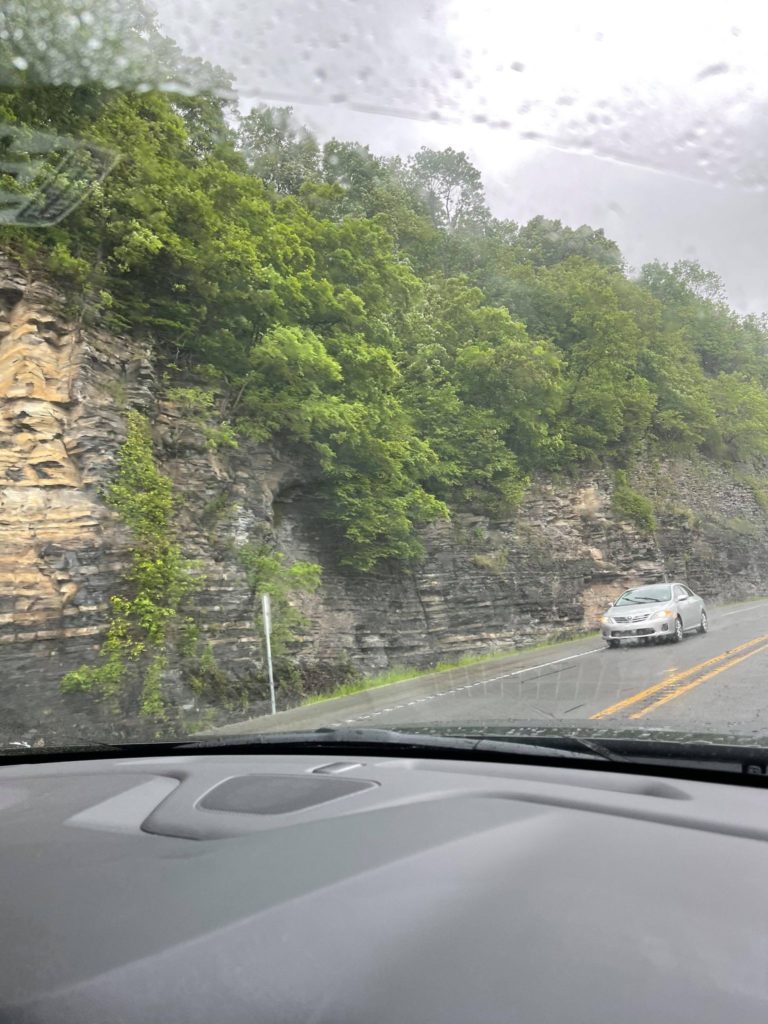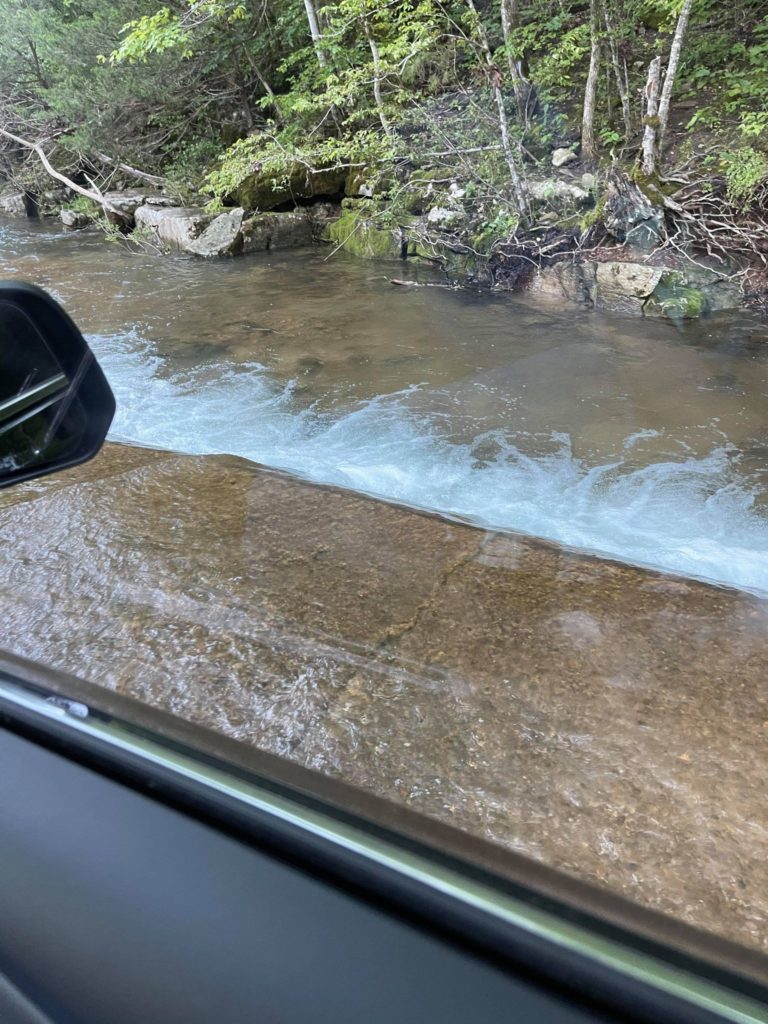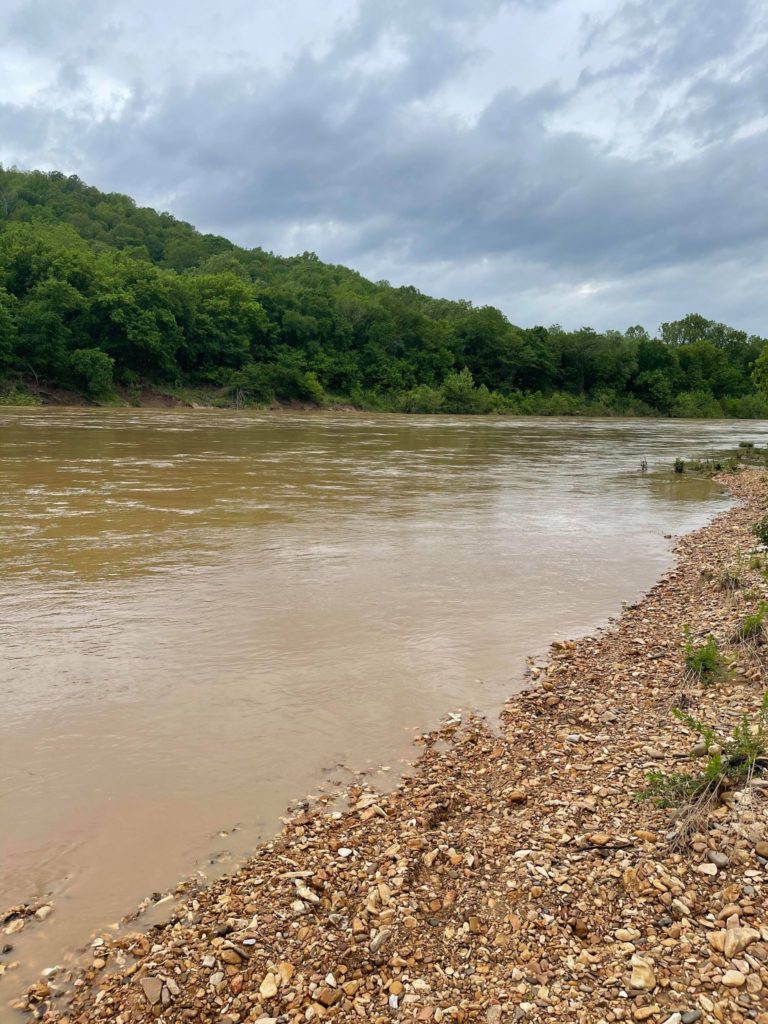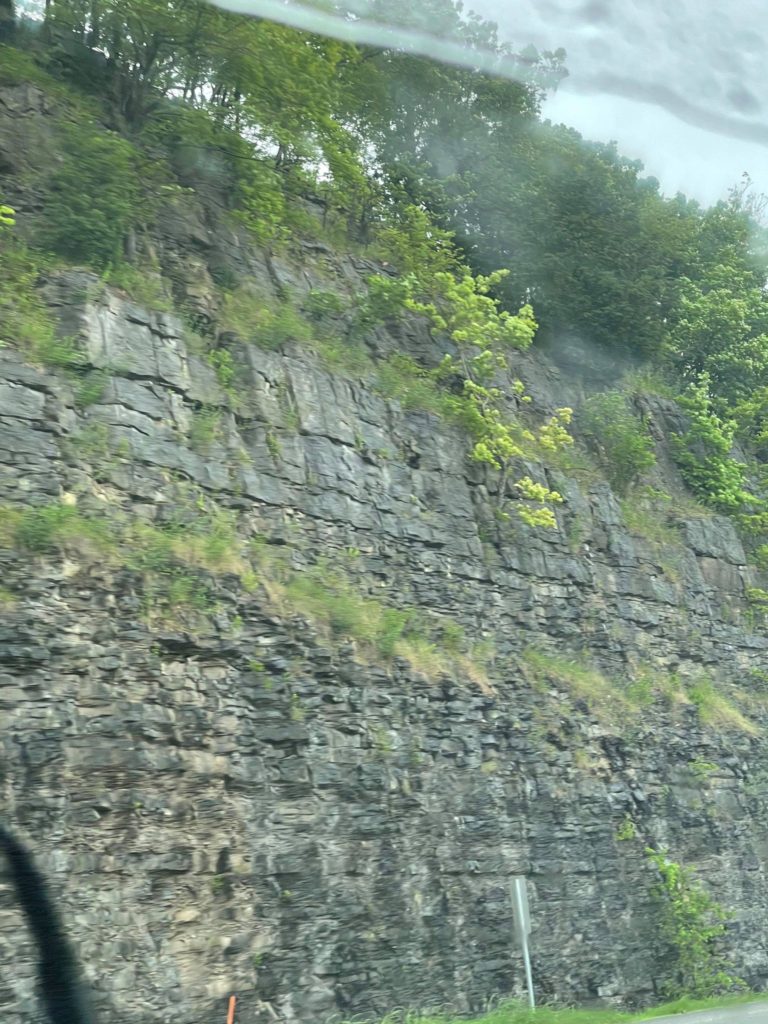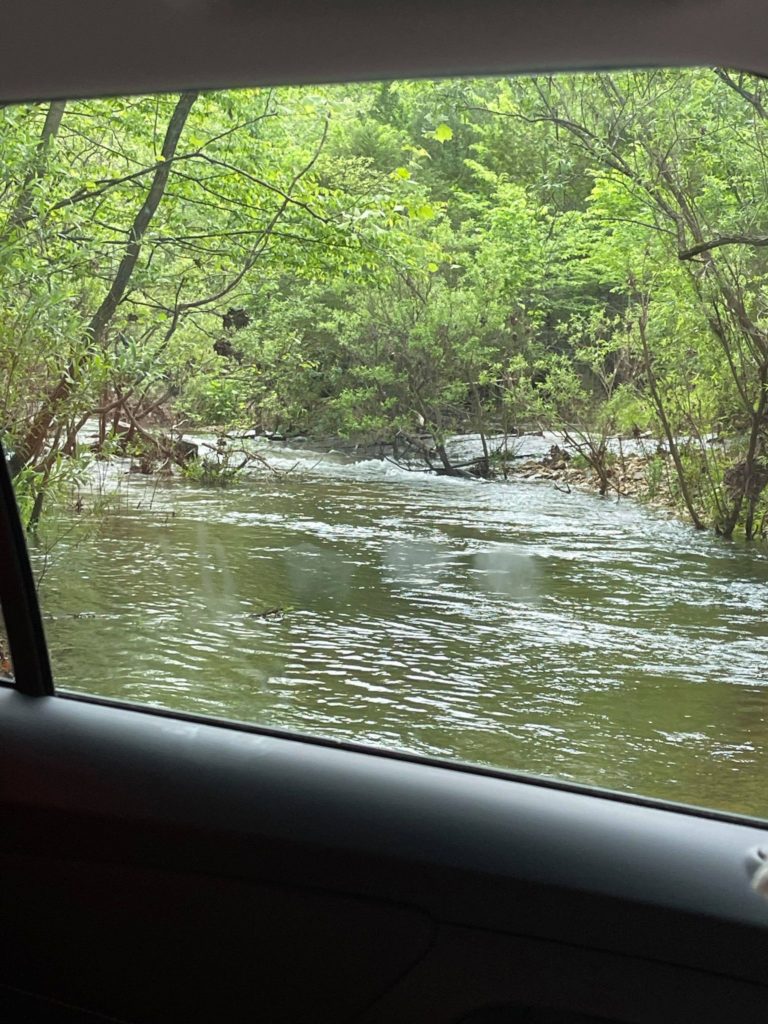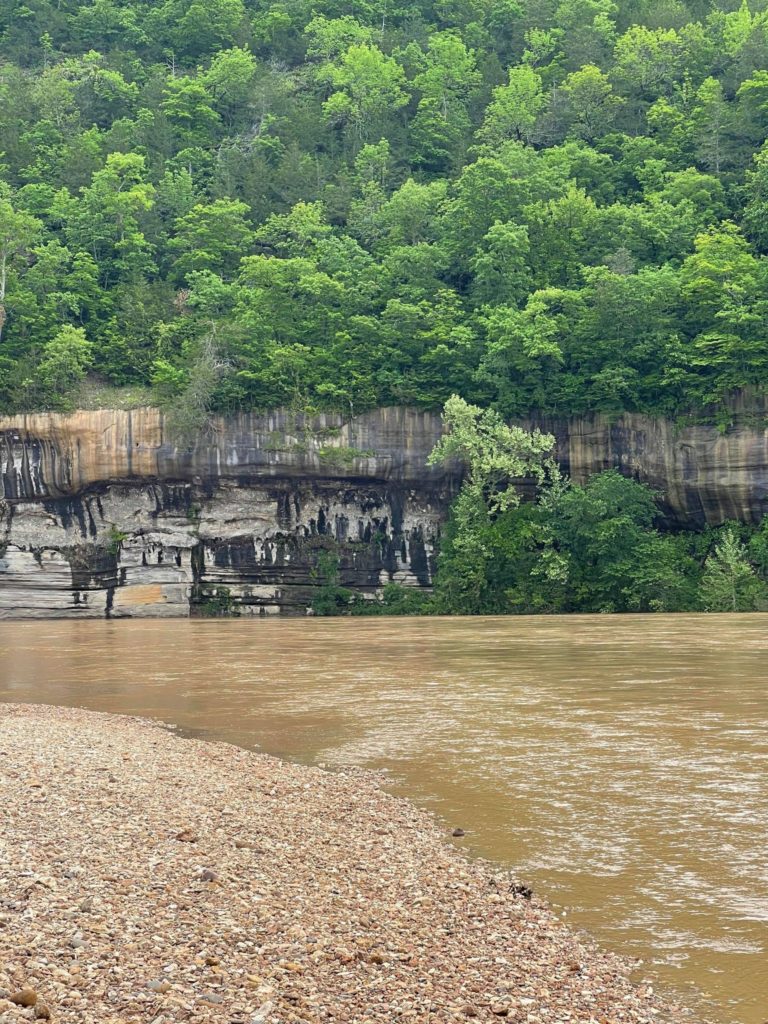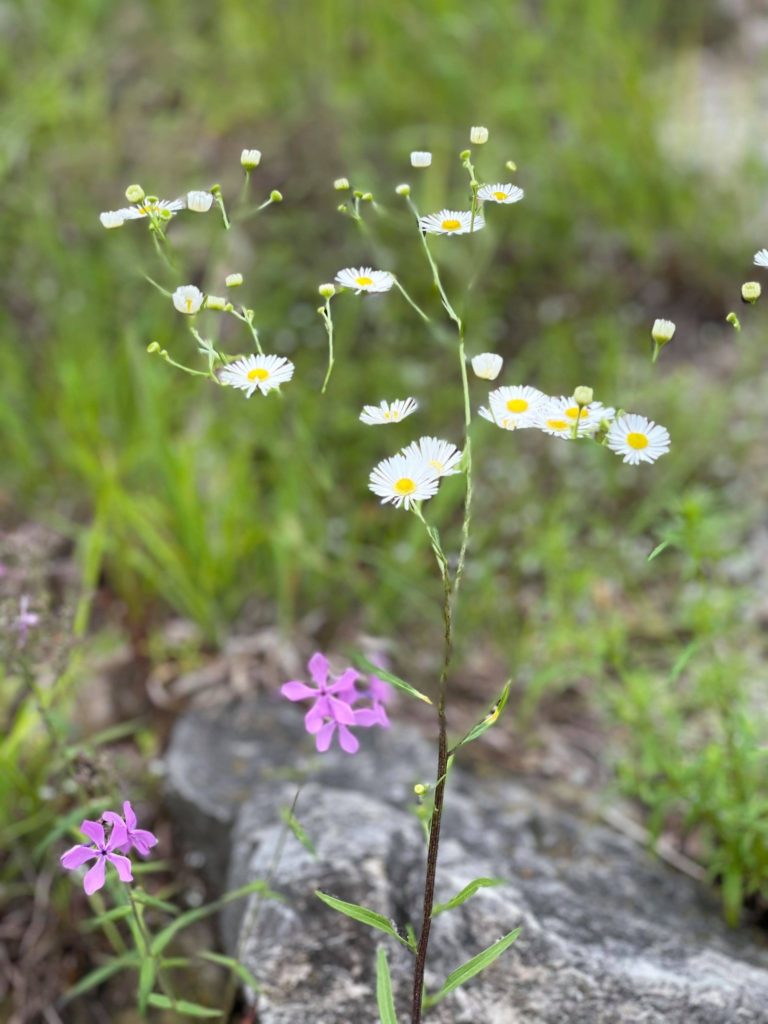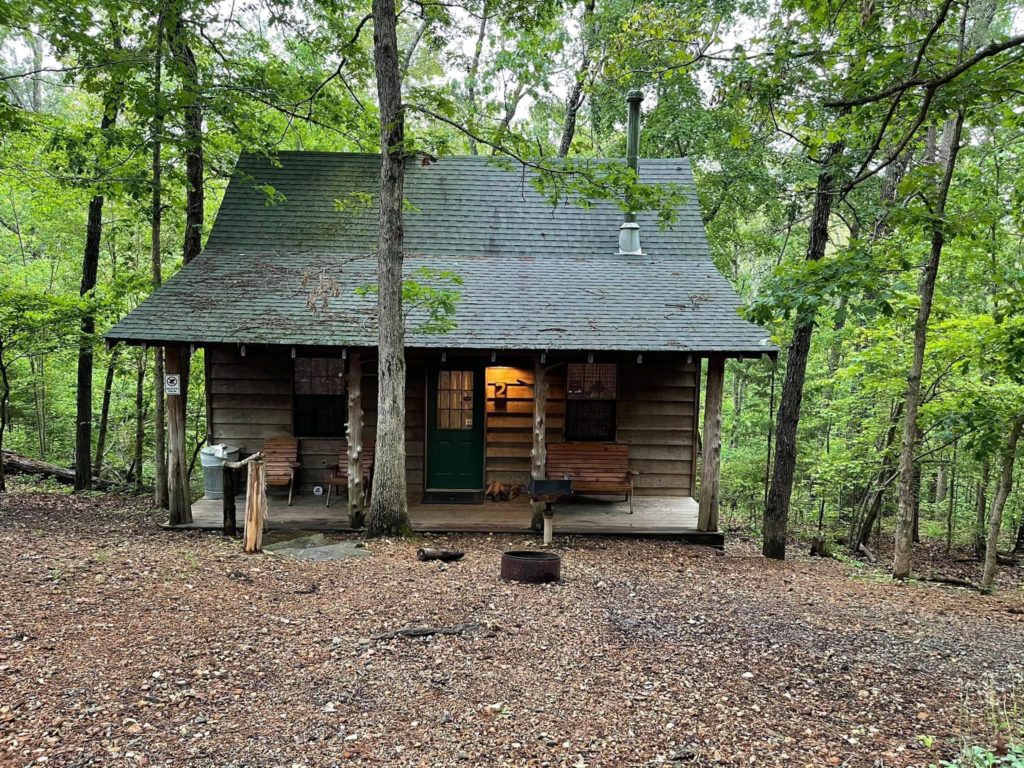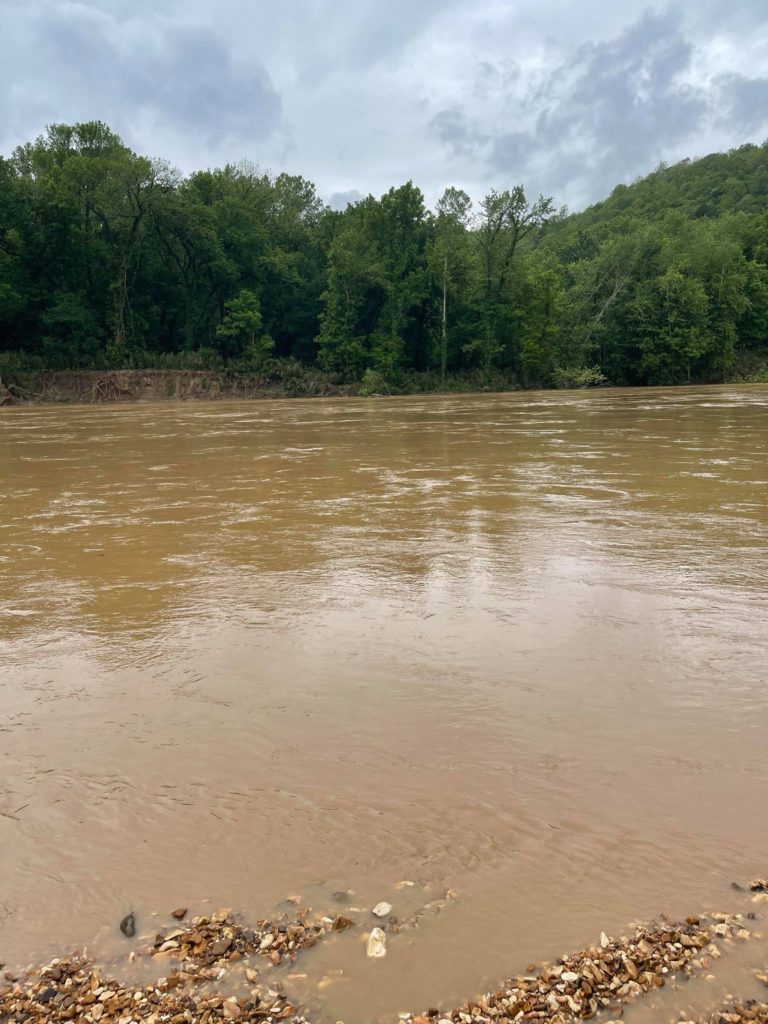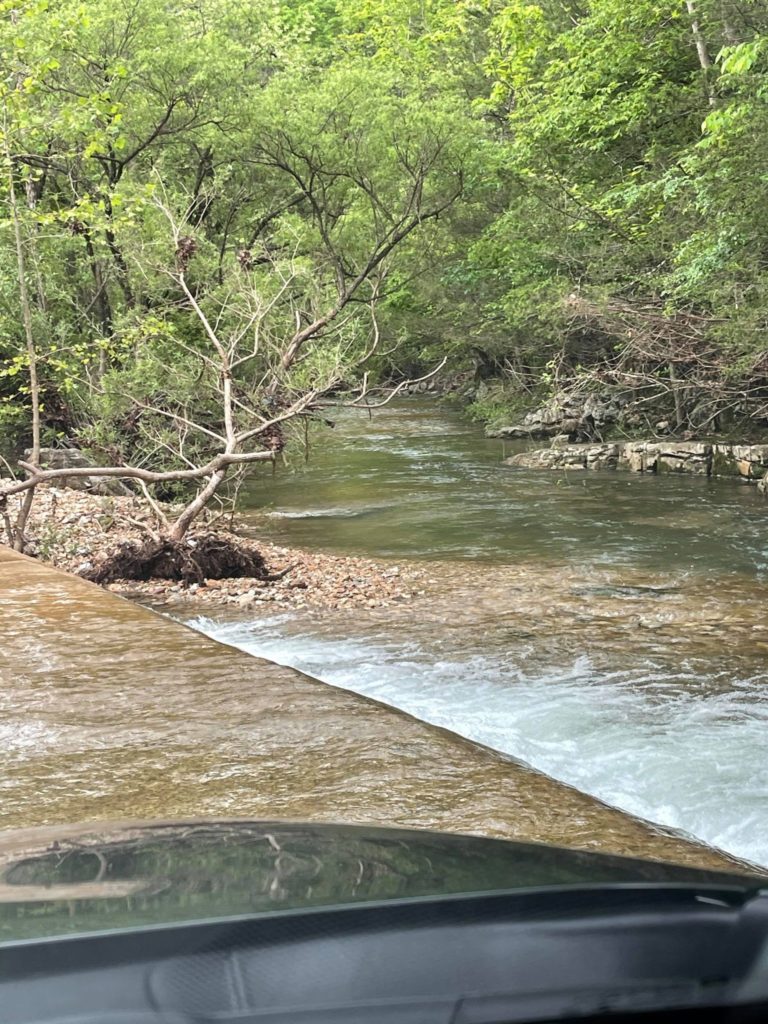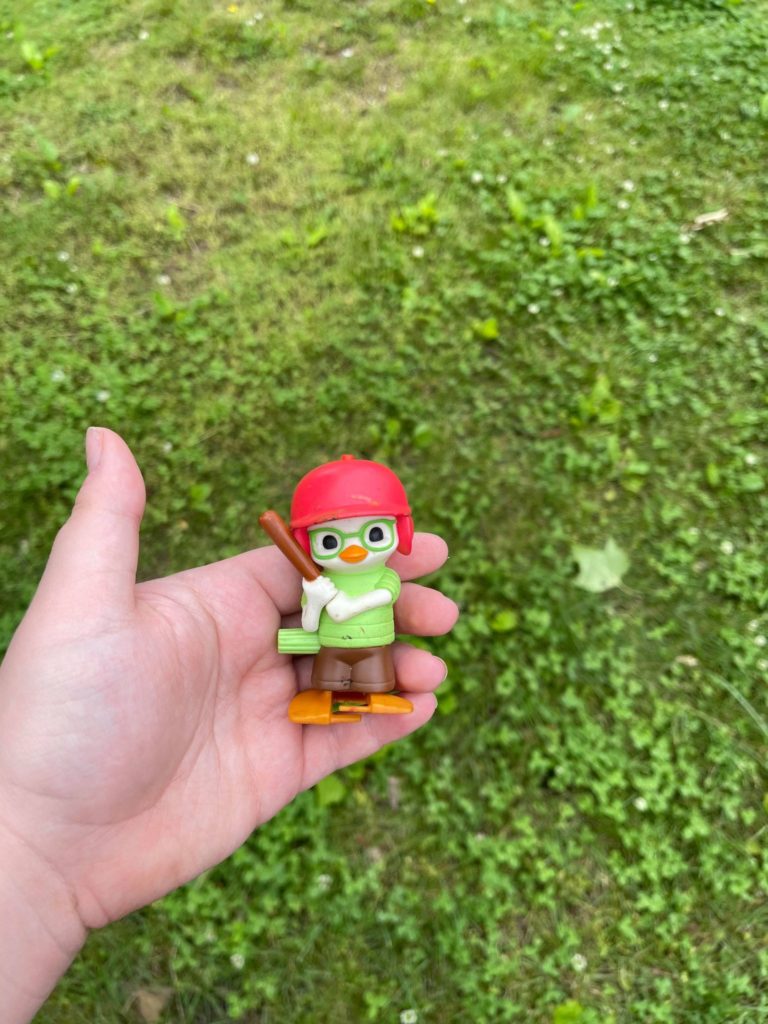Peace of Mind: Shelby Douglas ’25 at the Antioch College Wellness Center
Feb 18, 2023A Rough Start to Winter
Finding a winter Co-op proved to be quite a difficult task this past term. I had reached out to a variety of places and no one seemed to be interested and we simply had a lot of hiccups in finding a place. My main goal was to find a co-op in a school. I have taught at the preschool setting before and I wanted to try my hand at a teaching to an older range of kids. However not many places would accept someone who was not actively striving to reach their educational degree or who the school wasn’t already affiliated with. Alas it was a few days before the quarter when my advisor recommended reaching out to the Antioch Wellness Center. I would be helping with their Playwell Department along with working the front desk or whatever they needed. I started emailing Trevor Lowe and Alexa Greer and I started my winter co-op a week late but with a Co-op none the less.Finally Starting Co-op
I started working under Alexa Greer and Andrew Brody in early January. They both took me under their wing and showed me the in’s and out’s of how the Wellness Center functions on the day to day. Andrew really took in an interest as I wasn’t just a student worker but a Co-op student. He didn’t want me behind the desk the whole time as sitting in front of a desk for 8 hours a day can get quite old. He allowed me to observe and help out with a few of his training sessions as well as take a break from the desk and play Pickleball with a few of the patrons who attend the Wellness Center. I learned more and more about what the Wellness Center has to offer and how important it is to the community. I also began making friends which was something I struggled with before this co-op. I got to see Alexa receive her actual diploma from the college on her last day with the agreement that we would keep in touch. I got to meet Mani and Renee, considering them to be real true friends. About a month in to my co-op, Alexa and Andrew both left. I had only a few interactions with Trevor Lowe, who is the director of the Wellness Center, and was not sure how things would function from there. As my co-op progressed and I got to spend more time with Trevor I definitely began to consider him a mentor and appreciated how much he clearly cared about the Wellness Center. I was able to meet his family and earned a potential babysitting gig when the time comes that Trevor is not there the entire time the facility is opened. And learn about how he went to school near my hometown and if I mentioned a place he knew exactly where I was talking about. I learned how much everyone seemed to want this ship not to sink once more but set sail and prosper in every way possible.What now?
Before this experience I had never really paid much attention to the Wellness Center. I knew plenty of people that attended weekly, if not daily, but I assumed it was not my thing. After working there these past few months I have definitively decided that after I am not spending 30 hours a week there for work I will be coming by to attend a few classes. I want to play volleyball on Thursdays and Pickleball on Wednesdays. I want to attend a few yoga classes with Bee Holland and see the volunteers that work the morning shifts. This Co-op was supposed to be the co-op where I figure out my career path. Finally decide between law and education. Instead it has turned into a Co-op about making friends on campus and self love. I learned things about myself that I didn’t before. And in the midst of a civil war in my family, having the wellness center to help center me and give me a place to work out my frustrations on a punching bag or treadmill while also giving me peace in yoga or the pool has been so very much needed and appreciated. What I thought was a bust and waste of a Co-op has turned out to be one of the most brilliant decisions I could have made. And I am so glad that while I was not able to fully decide my career path, I have learned new techniques on how to be a better me and how lucky Antioch is to have the Wellness Center.Speaking Their Language: Christopher Thompson ‘24 at Buen Dia Family School in San Francisco, California
May 22, 2022
A birthday present made for me by a student

Japanese learning materials I made for group time
Community Coffee : Ryn McCall ’21 at Mount Totumas, Panama
Mar 17, 2022What lingers as the most dominant element of my time at Mount Totumas is air.
Centered between the great oceans of the east and the west and playing host to the fickle winds that shift overhead, the skies peel back from themselves again and again, ever revealing new patterns, new indecipherable secrets, new passing fascinations that dance day and night, lit by the sun and the moon alike. The clouds billow into tufted tapestries of blinding white before thinning to a gauzy whisper or falling in the finest mists while the sun, ever constant, beams on and on as it marches its reliable path up and over. In this shifting air, everything dances. The flowers stand solemnly bobbing, the trees in their shimmering glitter twist tantrically, the tall grasses sway as though in an unheard rhythm and the butterflies, often in duo, perform a ballet so organic no choreographer could hope to repeat it.
The immense quiet from the external, the significant altitude of 6,500ft, and the ever changing light and expressions of life give Mount Totumas an inherent dream-like quality. Its secluded footprint borders Amistad National Forest and is nearly an hour and a half from town, giving a sense that you could likely be the last person on earth and not know it for some time. As with most farm job sites, the work is new every day, and adds to the excitement of the place. Some days may be filled to the brim with coffee processing tasks, from washing and drying to sorting and roasting while other days might be planting and weeding or even making fresh bread for the guests. The downtime here primarily revolves around the captivating nature that surrounds me. With 400 acres of explorable cloud forest, I often find myself pulled deeper and deeper down a sendero, hoping to see a white faced capuchin or a resplendent quetzal. I encounter many creatures in my days, both big and small, though the recurring ones have a special foothold in my heart. Two farm dogs, Jacky and Canela (which translates to “cinnamon” in Spanish) have developed a certain affinity for me, no doubt because of the affection and snacks I shower them with that is absent in their other relationships with the humans here on the mountain. They have taken to following me around as I move about the farm, resting in the shade while I complete a task and standing once more when I move onto the next.
While my Spanish has vastly improved during my time here, sometimes having a friendly face that requires no conversation offers some comfort of its own. I have enjoyed the opportunity to practice my Spanish more, as there are very few people here that speak English, and only one person who can speak broken spanglish in the homestead where I live with the other trabajadores. One of the most striking improvements in my linguistics has been the shift from needing to mentally pre-translate each word or sentence before speaking and being able to respond more rapidly with the vocabulary readily present in my conscious mind. Beyond this, conversations with alumni, host, and owner Jeffrey Deitrich are some of my favorite moments here on the mountain. Ranging from topics such as endemic species to cultural shifts to the death of the cottage industry in America, our meandering and engaging chats open opportunities for wonder and a deeper dissection of concepts and topics not often navigated in polite small talk.
Beyond the farm work, tasks that interact with the constantly rotating guests offer an ephemeral quality to the cultural atmosphere. German, Russian, French, Locals and beyond exchange themselves in and out on a daily, weekly, and monthly basis. From scientists collecting data to avid bird enthusiasts to those simply seeking an escape from the bustling metropolises of their respective homes, even the reasons that bring guests to Totumas vary greatly.
My time spent here will certainly be remembered fondly and with vivid delight. At the intersection of personal interest and a need for further growth, Mount Totumas has been a splendid melding of that which interests me and that which I still wish to learn and explore.
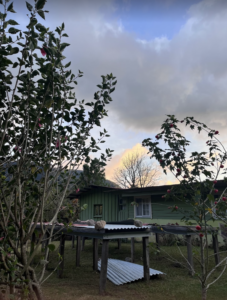
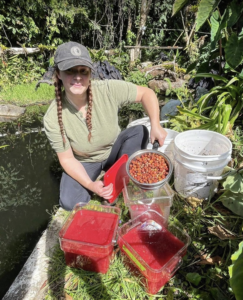

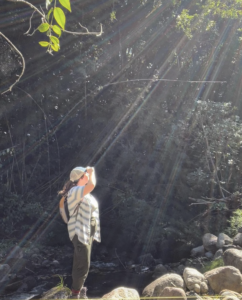
Being Social with Media: Paynter ’24 at Antioch College
Mar 03, 2022Multimedia arts have been a passion of my for years. It first started when I was younger, drawing my own characters and designs, and it’s slowly evolved into a collection of different mediums such as music and video editing. I have gotten better and better from that point on, and had a lot of fun doing so. When I first started my co-op position with the Communications department at Antioch College, I was worried these skills wouldn’t come in handy. Social media isn’t just about posting images and videos everyday, it’s about keeping follower engagement and getting something interesting out there, isn’t it? That’s what I initially thought.
 Starting my position, I met Mary Evans, the current Events & Social Media Manager. If you know me personally, you’d know I suffer from a lot of social anxiety, so it felt like a challenge to meet someone in person—especially after so long durning the pandemic in which much of our work became virtual and, admittedly, I am a bit homebound. But the day I did meet her, it was really nice! We talked and had a few good chuckles. Mary is a social justice activist, and uses her platform to provide space for underrepresented communities, most notably incarcerated individuals. As a trans woman who came out early last year, and a social justice advocate myself, I have a lot of respect for her and her work. Overall I think this is an aspect about Antioch in general: how accepting the community we have truly is. It’s made me feel a lot more comfortable to be myself. While it’s far from conquering social anxiety, opening up to at least one person in close proximity to me instead of just online folks is a pretty good start. I’m proud of my progress.
Starting my position, I met Mary Evans, the current Events & Social Media Manager. If you know me personally, you’d know I suffer from a lot of social anxiety, so it felt like a challenge to meet someone in person—especially after so long durning the pandemic in which much of our work became virtual and, admittedly, I am a bit homebound. But the day I did meet her, it was really nice! We talked and had a few good chuckles. Mary is a social justice activist, and uses her platform to provide space for underrepresented communities, most notably incarcerated individuals. As a trans woman who came out early last year, and a social justice advocate myself, I have a lot of respect for her and her work. Overall I think this is an aspect about Antioch in general: how accepting the community we have truly is. It’s made me feel a lot more comfortable to be myself. While it’s far from conquering social anxiety, opening up to at least one person in close proximity to me instead of just online folks is a pretty good start. I’m proud of my progress.
When it comes to this work, I’ve been going back and forth between old and new. What I mean by this is that the work I’ve been doing has been letting my use my skills in video and photo editing, while still giving me new things to keep me on my toes, which I enjoy. One new tool I’ve been learning to use is Canva, an Australian graphic design platform, used to create social media graphics and other visual content. Mary introduced me to this tool a while back, and it’s been really nice to use for what I’m doing, considering my initial idea was to do everything in my animation program of choice. Using Canva has definitely helped me structure things better in my own personal projects too, which has been a huge plus.
One video project I worked on this co-op that I think is the most notable is titled Reunion 2021 Alumni Association Awards: J.D. Dawson Award Recipient Peter Townsend. It is the first video project I’ve worked on that features subtitles, and it was a really interesting a new experience. The link to the video can be found HERE.
Overall this co-op position has slowly been helping me both get out of my shell, and learn to just be and feel comfortable with myself. It’s definitely gonna be a journey that probably stretches out past co-op. But for sure, this term has given me a huge boost in motivation and inspiration. I would humbly like to thank Mary Evans, as well as Luisa Bieri for giving me this opportunity, and helping me find a co-op option that both makes me feel comfortable, and let’s me step out of my bubble. To me at least, it seems like an impossible task, but she managed to pull through and find something I could do.
Photo credit: Antioch College Community Day winter 2022 from Antioch’s Twitter feed – https://twitter.com/AntiochCollege/status/1493669549522100226/photo/1
Hope Through Housing: Harris ’24 at Home, Inc. in Yellow Springs, Ohio
Sep 22, 2021Building Lives On Step At A Time
When I first started at Home Inc. I did not plan to be at a community land trust where they build homes for specialized groups in our community. My real dream was to be in a medical invested co-op but I can say that I’ve truly found my home at Home Inc. The very purpose at Home Inc. is to accumulate the funds to build affordable housing for people who are low class and undermined by the housing market. We have partnered with other organizations and as a nonprofit organization ourselves our mission is to strengthen the community and diversity through permanently affordable and sustainable housing through our programs. Over the years Home Inc. has provided many repair grants for current homeowners in Yellow Springs and has over 50 client households currently. We have had no foreclosures and have invested over $5 million into affordable housing.
As a Miller fellow my role at Home Inc. is to provide administrative support including telephone and mail communication workflow. I also organize documents and data in the supporting systems as well as managing the office supplies. As an intern at this organization I also aid in planning events for different house openings and client meetings, reach out to other organizations for partnerships and services, reach out to clients for connection upon something that they were interested in that is now available, and support donations through the donor process work window. I also send out mailing information for appeal letters or newspapers and aid in grant writing.
My day to day experience at Home Inc. consists of me getting the mail in the morning. Afterwards, I head to the office and check the voicemails, as well as prepare myself a cup of coffee and dive into any emails/work plans that have been put on my Miller Fellow spreadsheet by my supervisor or other members of Home Inc. and our director. I attend work meetings throughout the day with my staff and other partnership meetings that I have organized and put on my schedule. I also sometimes meet clients and go to different rentals around Yellow Springs to manage maintenance work and homeowner problems. At the end of my day I spray down the office due to Covid-19 and close everything up.
This nonprofit organization ended up fitting my career goals and education goals perfectly. All I wanted was to impact the world in some type of way with community service and potentially breaking a status quo or statistic. I wanted to be a participant in something that would impact the community in a huge way and make it a better living environment for all types of races and ethnicities. Home Inc. dedicates every resource perfectly to achieve its mission and purpose.
To anyone that sees this post and is thinking of trying this as a co-op I would definitely recommend it. I would say that this is the type of co-op where you have to be able to give a part of yourself to the community and not expect glory or recognition but expect to change and self advocate for those that can not.
Memory Book for The Senior Youth: Frank Fortino ’17 with Uplift Williams Preparatory, Dallas TX
Jun 10, 2021Making memories while trying to stay alive.
For the majority of the 2021 high school graduates, it has been an extremely difficult and tiring time trying to make it through their final year of grade school. And to top it all off, it was done during the merciless Covid-19 pandemic. My old high school, Uplift Williams Preparatory, has done an amazing job trying to give these seniors the most normal high school experience they could have and I feel extremely lucky helping design their memory book, also known as, yearbook.Playing with Digital Design
Learning to do digital art was one of the main reasons I chose to work with my old school and design the memory book theme. Throughout this process, I have been using the app Sketchable on my computer to start practicing and eventually finalize the cover.
Workplace with no “place”
Though my work for this co-op was online, I had the option of going to school physically. This was interesting since it would be my first time going back since graduating online back in April. I decided it was best not to however, because really what I was doing was creating and working creatively, and I think I needed a space where I would feel comfortable doing so. With all that, I chose to work from home which made the entire co-op experience slightly less social, but overall I feel like I was able to focus more on work.Including socialization in other ways
Wishing I could socialize through my co-op job, I decided it was best to take this time to focus more on what I could get out of this co-op experience. It took me a while to realize that working from a distance did not mean that I could not have social interactions and still learn from others. Throughout these past few months I have gotten back in touch with old friends who worked with digital media and was able to get some tips from them. Not only that, but through this I was gifted the opportunity to get in contact with some old high school teachers which is always a breath of fresh air and a nice reminder of who some of your role models were.Captured Moments in Time: Morgan Johnson ’24 at Shutterbug Photography in Monroe, Louisiana
Jun 07, 2021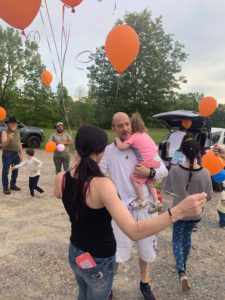 When I thought of working for my aunt with her photography business, I thought it was a perfect idea. I liked taking pictures of nature and I believed it would be a perfect first co-op. My aunt owns Shutterbug Photography in Monroe, Louisiana. Her main clients are typically families with young children to infants.
When I thought of working for my aunt with her photography business, I thought it was a perfect idea. I liked taking pictures of nature and I believed it would be a perfect first co-op. My aunt owns Shutterbug Photography in Monroe, Louisiana. Her main clients are typically families with young children to infants.Behind The Counter: Julia Hainzer ’22 at the Olive Kettering Library in Yellow Springs, Ohio
Nov 18, 2019Learning: Fortino ’17 at Glasrai Farms in Lehinch, Ireland
Dec 08, 2016I’m working on glasraí farms in Lehinch Ireland as a WWOOFer (World Wide Opportunities on Organic Farms). Aoife and Joe are the owners of a start up farm with the ideal that their practices will be better for the environment than standard organic practices. At the moment, they are growing potatoes, tomatoes, spinach, kale, zucchini, cucumber, beans, and a variety of leafy greens with the hopes that next season – with another polytunnel and shed being built – they will double their crops by this time next year. Their practices are holistic, and ideas about how to save the humans on this world are realistic. While raising their small child, Aoife and Joe are doing their best to contribute to the image of the world they want to see for their child and children like her.
After only being here a short while, I have eaten amazing food, and worked to the point of exhaustion. I have come to the conclusion that I, as a filmmaker, have no right to have opinions about farmers and the methods they practice. In class, especially during global seminar food, we have created ideas and opinions in our heads about food and what it would take to feed the world. I had made opinions and judgements about traditional farmers without even realizing it. Before I came here, I would condemn traditional farmers and wonder why they farmed the way they did without any care for the environment or the chemicals that the consumer would eat. I would wonder why anyone would farm traditionally, for it wouldn’t take much to all of a sudden switch to collectively farm organically.
What do I – a 20 year old film student – have anything productive to say about farming to a 75 year old dairy farmer who has been milking cows since they were sixteen? I visited Joe’s father’s conventional dairy farm and helped Joe milk some of the cows while his father was away. This is their life, he will stand in what looks a bit like a large cement trough and connect automatic milkers to over sixty cows twice a day. This will take him at least five hours, and that is a fairly small operation. The farm is only able to keep going being of its 100 plus cows kept for meat. The cows have much room to graze, and seem to be happy. I have heard of much worse operations, but after helping for just a bit, I have realized I have no grounds to judge. A way of life cannot be judged by someone who knows nothing about it. I don’t agree with drinking milk, in-fact I’m lactose intolerant, but milk is Joe’s father’s life. It is what makes him him. When people ask what he does, he will answer, I milk cows.
My opinions about how to farm sustainably should not be used to judge those who have built their lives upon conventional farming. The world has changed around them, and perhaps Joe’s father started with only 15 cows and that suited him fine. The world grew larger and he had to change his methods to meet the demands. Before my generation, he was farming just fine, the world was alright. But things change, and who am I to blame him for changing?
As a filmmaker, you may be wondering what I’m doing on any type of farm. Along with gathering footage for a film I plan to submit to 30(ish) Frames Per Second: A Yellow Springs Film Festival a film and video festival that I am organizing and hosting for my senior project, I am also learning to live the way that I want to when I leave Antioch. I am building polytunnels to grow things throughout the winter. I spend an entire morning spraying crops with a tea made from horsetail that keeps the nightshades from getting blight. I am helping roof a barn, and make a stone wall without cement. I am living in a house that gets all of its water from the rain, and heat its water with solar panels. If I want to be the generation that makes a difference in the world, I cannot wonder why people like Joe’s father does not become organic. I can not try to change the people who have established their lives mono-cropping corn in Ohio. I can only learn from their children who wish to farm differently because their lives are not wholly connected to conventional farming the way their parents are.
This experience has not only given me insight into how I want to live my life, but how I frame my thoughts. It is up to me to do what I think is right, and then when I miscalculate and mess up, it will be up to my children to learn from my mistakes. There are many things at play with farming, and it would unfair not consider the farmer in the equation when we think about feeding the world as we often do. The farmer is pushed to the corner of our minds and left to bend to the wants and wills of the consumer. I will do my best to grow my own food, and live sustainably. I will do my best to incorporate these thoughts and ideologies into my filmmaking. I will do my best to live the life I want to see in the world. But I know that I will not be farming for the consumer. I will not have to answer to the constantly growing demands, and wonder if what I’m doing is what I want to do. I will do my best not to judge those before me, but instead learn from them, and perhaps respectfully disagree, while still understanding what they do is their life. I want to open my mind, and I want to do what I can to fix the humans living on this world. That is what this co-op has taught me.
Visit glasraí’s facebook page: https://www.facebook.com/glasrai/?fref=ts


